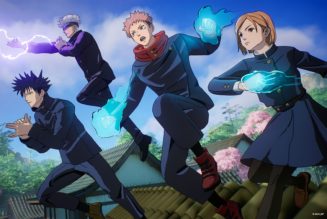She-Hulk: Attorney at Law’s Jennifer Walters is introduced as a woman so in control of her emotions that she doesn’t have to live in fear of ever flying into one of the ultra-destructive, Hulked-out berserker rages her cousin Bruce is known for. But in She-Hulk’s most recent episode — the season’s penultimate — the series took a pointed and dark turn to make clear that its hero is very capable of tapping into primal furies of her own, especially when provoked by something as heinous and violent as revenge pornography.
This review contains spoilers for episode 8 of She-Hulk: Attorney at Law.
Despite being one of She-Hulk’s busier episodes, “Ribbit and Rip It” from writer Cody Ziglar and director Kat Coiro is also one of its strongest. It really feels emblematic of what the series can be now that Jennifer Walters, Esq. has been firmly established within the MCU. Jen knows that she’s not practicing the kind of law that she wants to as part of Goodman, Lieber, Kurtzberg & Holliway’s Superhuman Law Division and that she isn’t entirely down with the idea of being a full-on superhero herself. But with each of her triumphs (both in and out of the courtroom) as She-Hulk, Jennifer’s become increasingly confident both in herself and in the idea that she might be able to make the whole gamma radiation thing work for her.
She-Hulk hasn’t broached the topic of how comically aware she is of the typical narrative structure of Marvel’s superhero shows, but in “Ribbit and Rip It,” she understands that it’s somewhat telling how she’s made it this far into her series’ first season relatively unscathed. Normally, this is the point in a season when Things Get Bad-Bad for a Series Protagonist in a Surprising Twist of Events that necessitates a Special Guest Star From Another Show sticking around until the finale. As an indestructible Hulk with a newly tailored super suit, though, Jen figures that there probably isn’t all that much out in the world that she needs to be worried about, which might be part of why she takes being assigned to represent Leap-Frog (Brandon Stanley) in such stride.
%2Fcdn.vox-cdn.com%2Fuploads%2Fchorus_asset%2Ffile%2F24088497%2FScreen_Shot_2022_10_06_at_4.47.27_PM.png&w=2400&q=75)
Though some of She-Hulk’s Leap-Frog subplot focuses on one man’s legal fight for damages after he injures himself while improperly using a super suit, the entire thing’s really a vehicle to reintroduce Matt Murdock (Charlie Cox) to the MCU as yet another reminder to Jennifer that there are a number of perks that come with living the superhero / lawyer double life. Regardless of the situation, Jennifer doesn’t enjoy losing in court. But she’s as intrigued as she is impressed when Murdock, who’s representing an in-demand fashion designer known for specializing in super suits, methodically picks Leap-Frog’s testimony apart using both his legal acumen and his enhanced Daredevil senses.
Like any legal comedy / drama worth its salt, She-Hulk’s made romance (or, at the very least, the idea that people like to have sex) an important but not all-encompassing part of Jennifer’s story. After a series of dates and hookups that all ultimately left her feeling objectified, She-Hulk introduces Matt into Jen’s life not just as a potential love interest who might stick around but also as a reminder to her (and to us) why people get back up and keep trying after they’ve made a few bad connections. Matt’s sage advice about heroism to Jen over drinks is one of the factors that leads to her showing up to defend Leap-Frog when he calls her in a panic while on the run from… Daredevil, of all people. Matt’s advice is also why, after a brief scuffle that leads to her unmasking him, Jen’s pleasantly surprised to realize who Daredevil actually is, and the pair end up going back to hers to hook up after they sort out the mess Leap-Frog’s gotten himself into.
As funny as She-Hulk’s “Captain America FUCKS” stinger is, what makes Daredevil’s shoeless walk of shame in “Ribbit and Rip It” work so well as a joke is how it plays like the show’s way of letting Jen know that things are going to work out fine for her, even though it might not always feel that way in the moment. From Jen’s perspective, hooking up with Matt (and his expressing interest in Jen, not just her other superpowered self) hours before she’s supposed to receive a “female lawyer of the year” award is a sign that everything’s starting to turn up She-Hulk, and it’s easy to understand why she feels that way.
%2Fcdn.vox-cdn.com%2Fuploads%2Fchorus_asset%2Ffile%2F24088738%2FScreen_Shot_2022_10_06_at_6.37.02_PM.png&w=2400&q=75)
Rather than spending its time chronicling Jen’s path to understanding her powers or becoming mortal enemies with villains like Titania and the Abomination, She-Hulk’s really been a story about a woman trying her damndest to simply live her life, no fuss, no muss. Powers aside, Jennifer’s a relatively normal person who just wants to be able to date, work, make mistakes, and recover from them the way everybody else does. Becoming She-Hulk is what makes all of that so within her grasp. Because Jennifer’s so new to being a high-profile superhuman, though, she’s deeply unprepared for the devastating turn of events that bring “Ribbit and Rip It” to a close.
It’s been clear for some time now that, while She-Hulk’s featured a surprisingly large number of petty, two-bit villains in fun costumes, the season’s biggest bad is actually a collective of misogynistic trolls known as Intelligencia who are united in their obsessive hatred and jealousy of Jennifer.
With there being so much going on at work and in her personal life, it’s been hard for Jen to see how some of the odd occurrences — like her last hookup ghosting her in the middle of the night — she’s noticed aren’t quite as coincidental as they initially seem. But the very serious threat posed by the Kiwi Farms-like network of trolls becomes crystal clear to Jen, her friends, and her family during the gala when her acceptance speech is interrupted — hijacked, really — by a live Intelligencia broadcast. There’s little Jennifer can really do as Intelligencia doxxes sensitive information about her and some of her private texts to a ballroom full of people. But when the broadcast cuts to footage of Jen hooking up with a man she met at a friend’s wedding, she starts to rip the numerous monitors behind them down in a full-on Hulk rage that sends everyone into a panic and leads to her being surrounded by armed police.
%2Fcdn.vox-cdn.com%2Fuploads%2Fchorus_asset%2Ffile%2F24088695%2FScreen_Shot_2022_10_06_at_2.46.38_PM.png&w=2400&q=75)
Like in Attorney at Law, the Jennifer of Marvel’s comics is similarly known for her ability to retain her composure while in Hulk mode, but she’s also gone through long, intense periods of not being able to control her transformations, especially after experiencing intense trauma. The MCU’s She-Hulk hasn’t died the way she briefly did in the pages of Brian Michael Bendis and David Marquez’s Civil War II #1 before coming back to life with grey skin and a much looser handle of her abilities. But the roaring rampage Jennifer goes on in “Ribbit and Rip It” after Intelligencia’s broadcast is very reminiscent of how comic She-Hulk’s grey period was a direct response to the unbelievable shock of being killed.
What makes Jen’s wrecking the ballroom such a powerful scene is how “Ribbit and Rip It” leaves very open to interpretation just how cognizant she is of what she’s doing and how easy it is for everyone present to immediately see her as a monster. Even though it’s already been well established that She-Hulk isn’t exactly like her powder keg of a cousin, and eyewitnesses at the gala could see exactly what prompted her anger, none of it matters because, to them, she’s a threat, even in moments when she’s the one being harmed.
She-Hulk’s been pretty upfront about how much of a power fantasy story it is — one in which a woman doesn’t have to live in constant fear of physical danger because she’s more or less invulnerable. “Ribbit and Rip It” doesn’t at all ruin that fantasy, but it does temper it (in the strengthening sense) by putting She-Hulk in this sort of position and letting her express an all-too-understandable rage that she has every right to feel.








